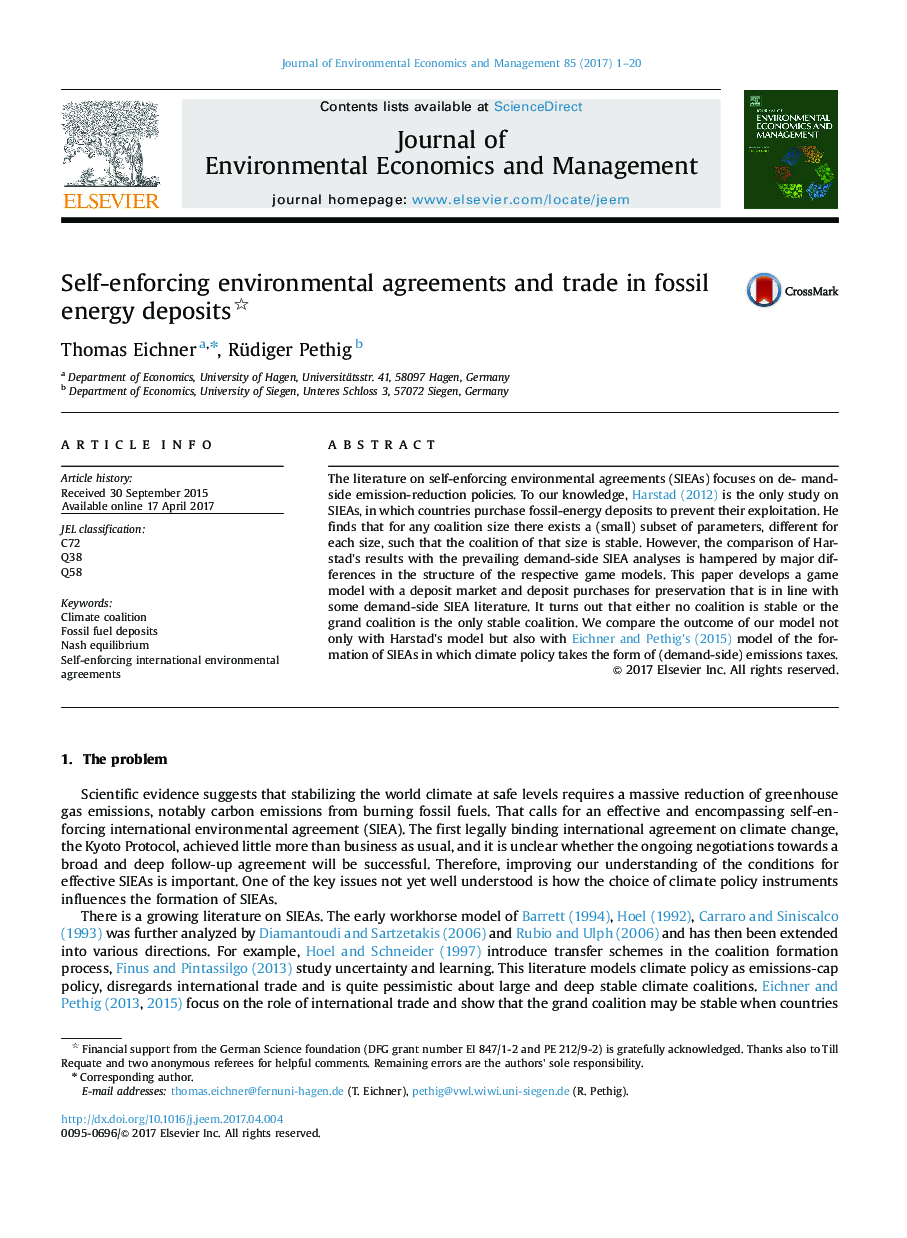| Article ID | Journal | Published Year | Pages | File Type |
|---|---|---|---|---|
| 5100369 | Journal of Environmental Economics and Management | 2017 | 20 Pages |
Abstract
The literature on self-enforcing environmental agreements (SIEAs) focuses on de- mand-side emission-reduction policies. To our knowledge, Harstad (2012) is the only study on SIEAs, in which countries purchase fossil-energy deposits to prevent their exploitation. He finds that for any coalition size there exists a (small) subset of parameters, different for each size, such that the coalition of that size is stable. However, the comparison of Harstad's results with the prevailing demand-side SIEA analyses is hampered by major differences in the structure of the respective game models. This paper develops a game model with a deposit market and deposit purchases for preservation that is in line with some demand-side SIEA literature. It turns out that either no coalition is stable or the grand coalition is the only stable coalition. We compare the outcome of our model not only with Harstad's model but also with Eichner and Pethig's (2015) model of the formation of SIEAs in which climate policy takes the form of (demand-side) emissions taxes.
Keywords
Related Topics
Social Sciences and Humanities
Economics, Econometrics and Finance
Economics and Econometrics
Authors
Thomas Eichner, Rüdiger Pethig,
